“Comp” means not only to accompany, but also to complement. It’s the “complement” part that I’m going to focus on here.
| Print This! Click here to download a printable PDF of this month's notation. |
Download Example 1 Audio...
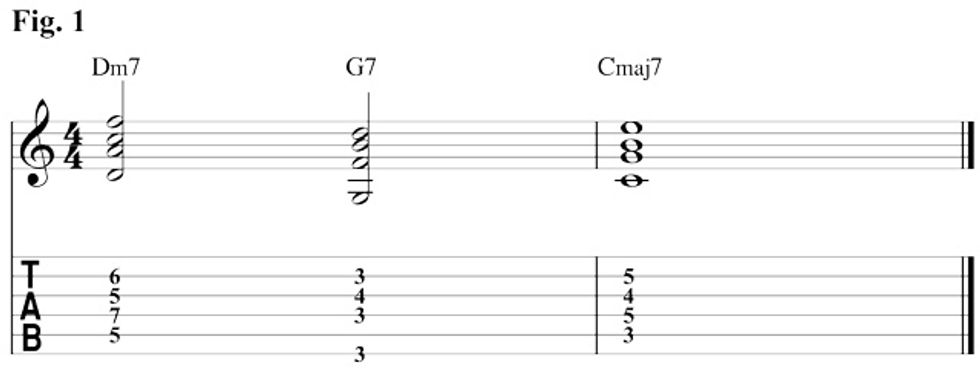
These voicings, although very functional, can be kinda “vanilla” sounding. The next step will be to add some extensions and alterations. In Fig. 2 you can see the basic formula for a major 7th chord plus the extensions (9–11–13) that occur naturally in a key. Certain chords have alterations that we use on the 9, 11, and 13. In the case of a dominant 7th chord, these alterations are b9, #9, #11/b5, and b13/#5. Each chord has its own unique sound and can add a lot of flavor to a solo. In Fig. 3 you can see a few different voicings from some altered C7 chords.
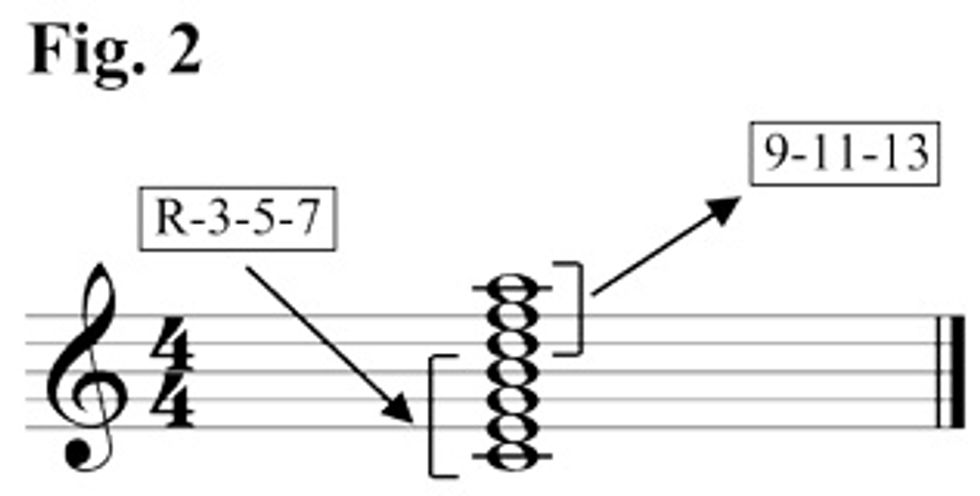
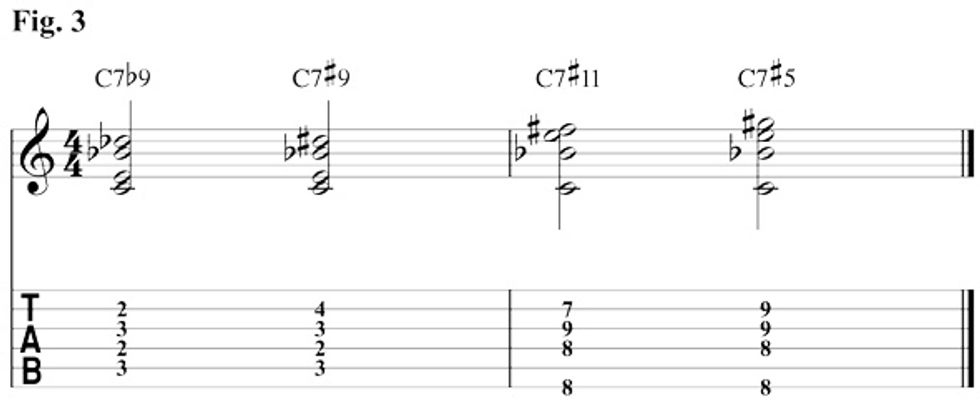
Using these in your basic progressions to enhance what the soloist is playing has limitless possibilities. The example shown in Fig. 4 uses the minor 7 of the ii as the highest voice, leading to the 5, then the #9 to the b9 on the V chord. It’s important to know where the extensions lie on the fretboard. The goal is to have these at your disposal whenever the occasion arises. This also comes in handy when using some single-note comping behind a soloist. This is a technique that brings a subtle, yet powerful form of harmonic support to a soloist. In Fig. 5 you can see an outline of chord tones and extensions that fit the progression we used in the previous examples.
Download Example 4 Audio...
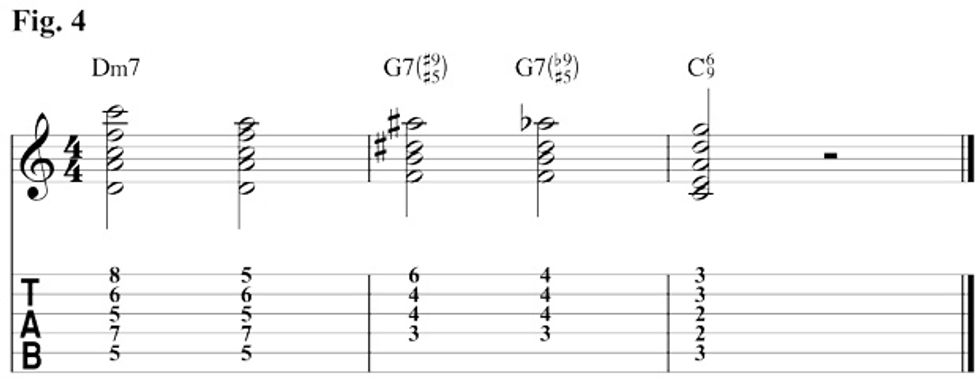
Download Example 5 Audio...
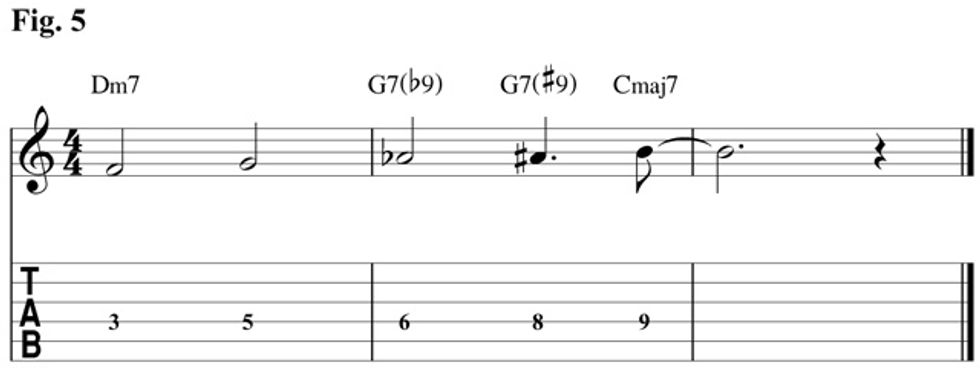
Remember to listen to what the soloist is doing. Think of comping as a conversation between the soloist and the rhythm section: he/she “says” something, and you respond. Great examples of this kind of interplay can be found on Sonny Rollins’ album The Bridge The interplay between him and guitarist Jim Hall is one of the greatest dialogues in jazz.
 Amanda Monaco has performed at the Blue Note, The Kennedy Center for the Performing Arts, and the JVC Jazz Festival, as well as other venues in the United States and Europe. Her quartet, Deathblow, combines free-bop sensibilities with through-composed pieces that are equal parts textural, adventurous, and whimsical. Amanda has served on the faculty of Berklee College of Music, New School University, and the National Guitar Workshop and is the author of Jazz Guitar for the Absolute Beginner (Alfred Publishing). For more information, visit amandamonaco.com.
Amanda Monaco has performed at the Blue Note, The Kennedy Center for the Performing Arts, and the JVC Jazz Festival, as well as other venues in the United States and Europe. Her quartet, Deathblow, combines free-bop sensibilities with through-composed pieces that are equal parts textural, adventurous, and whimsical. Amanda has served on the faculty of Berklee College of Music, New School University, and the National Guitar Workshop and is the author of Jazz Guitar for the Absolute Beginner (Alfred Publishing). For more information, visit amandamonaco.com.
